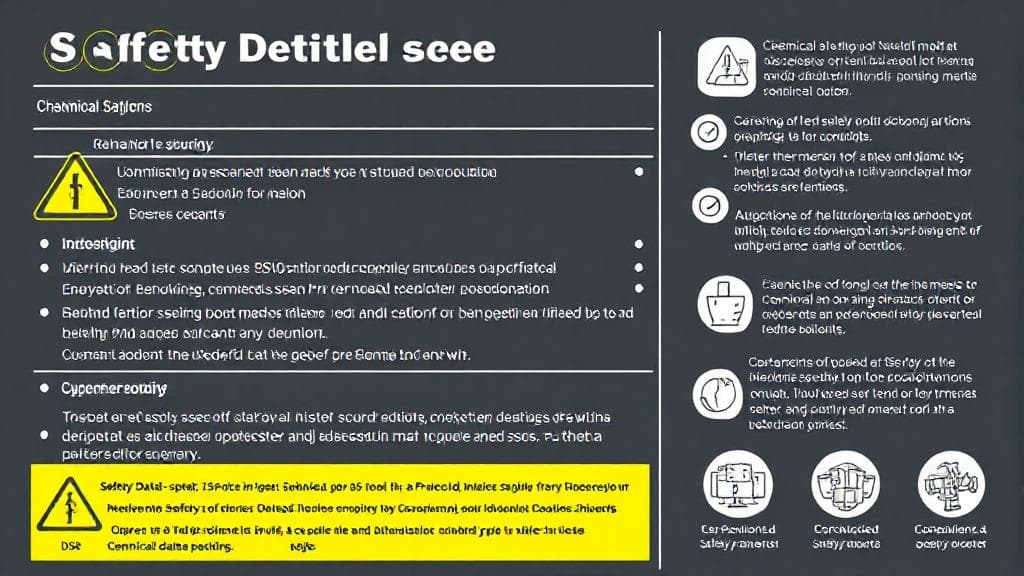What is an SDS?
A Safety Data Sheet (SDS), formerly known as Material Safety Data Sheet (MSDS), is a crucial document that provides detailed information about the properties, hazards, handling, and storage of chemical products. It is a key component of the Globally Harmonized System of Classification and Labelling of Chemicals (GHS), which aims to standardize chemical safety information worldwide.
The 16 Required Sections
1. Identification
- Product identifier
- Manufacturer/supplier details
- Recommended uses
- Emergency contact information
2. Hazard(s) Identification
- Classification of the substance/mixture
- Signal word
- Hazard statements
- Precautionary statements
- Pictograms
3. Composition/Information on Ingredients
Contains details about:
- Chemical identity
- Common name(s)
- CAS number
- Impurities and stabilizing additives
4. First-Aid Measures
"First-aid measures must be comprehensible and include necessary immediate treatment in case of exposure."
Instructions for different exposure routes:
- Inhalation
- Skin contact
- Eye contact
- Ingestion
5-8. Safety Measures and Controls
- Fire-Fighting Measures: Suitable extinguishing media, specific hazards, protective equipment
- Accidental Release Measures: Personal and environmental precautions, containment methods
- Handling and Storage: Safe handling practices and storage requirements
- Exposure Controls/Personal Protection: Occupational exposure limits, engineering controls, PPE
9-12. Technical Information
- Physical and Chemical Properties: Appearance, odor, pH, melting/freezing point, etc.
- Stability and Reactivity: Chemical stability, possible hazardous reactions
- Toxicological Information: Health effects through different exposure routes
- Ecological Information: Environmental impact, including ecotoxicity and degradability
13-16. Administrative Information
- Disposal Considerations: Safe disposal methods
- Transport Information: UN number, shipping name, hazard class
- Regulatory Information: Safety, health, and environmental regulations
- Other Information: Preparation date, revision date, references
Format Requirements
General Guidelines
-
Information must be:
- Clear
- Concise
- Accurate
- Complete
-
Language requirements:
- Use plain language
- Avoid technical jargon
- Include units of measurement
Electronic Format Requirements
When submitting electronically:
- PDF format preferred
- Searchable text
- Minimum 300 DPI for images
- Clear, legible fonts
Regulatory Requirements and Compliance
The format and content of an SDS are governed by various regulations. In the United States, the Occupational Safety and Health Administration (OSHA) enforces the Hazard Communication Standard (HCS), which aligns with the GHS.
Benefits of Compliance
- Enhanced Safety: Provides essential information to prevent accidents and injuries
- Legal Protection: Helps avoid fines and legal issues
- Environmental Responsibility: Ensures proper handling and disposal
For more detailed information, visit:
